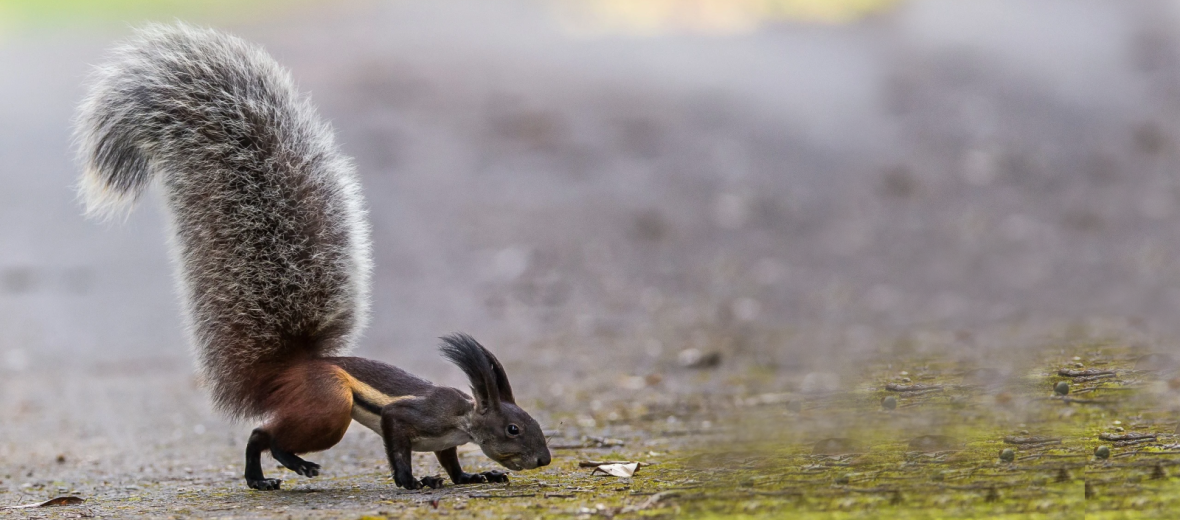
The tufted ground squirrel, aka groove-toothed squirrel, hails from the island of Borneo. They prefer hillsides in lowland primary forests, orchards, and secondary forests. Due to habitat destruction at the hands of the agricultural and logging industries; hunting for their meat; and trapping for their fur, these cool squirrels are currently listed as Vulnerable by the IUCN. Their numbers are also decreasing.
First the Stats…
Scientific name: Rheithrosciurus macrotis
Weight: Up to 4.4 lbs.
Length: Up to 13.9 inches, plus up to a 13.5 inch tail
Lifespan: Up to 4+ years
Now on to the Facts!
1.) Tufted ground squirrels are presumed to be diurnal (active during the day).
2.) These critters are also called vampire squirrels.
3.) They are noted for having the largest known tail to body size ratio of any mammal.
4.) Although rumors suggest otherwise, their diet consists of seeds, nuts, and insects.
5.) Tufted squirrels can be found at up to 3,600 feet elevations, in the hillsides.
But wait, there’s more on the tufted ground squirrel!
6.) It is presumed that these squirrels are solitary and only come together to breed.
7.) The mating rituals are not known at this point. But typically speaking, ground squirrels tend to have up to 8 young, called kits or kittens.
Did you know…?
According to forest-dwelling Dayak hunters, these critters attack & kill deer and chickens to eat their liver, heart, and stomach contents.
8.) It has been said that these squirrels will await passing deer and leap from low branches, attacking the neck of the deer, severing their jugular vein, causing it to bleed out.
9.) This tall tail being said, Edward Banks recorded in 1949 that these squirrels were skittish and very willing to bite ferociously.
10.) Birds of prey, Bornean clouded leopards, Borneo bay cats, and humans all prey on these squirrels.
Be sure to share & comment below! Also, check out the Critter Science YouTube channel. Videos added regularly!
Want to suggest a critter for me to write about? Let me know here.
Some source material acquired from: Wikipedia & IUCN



